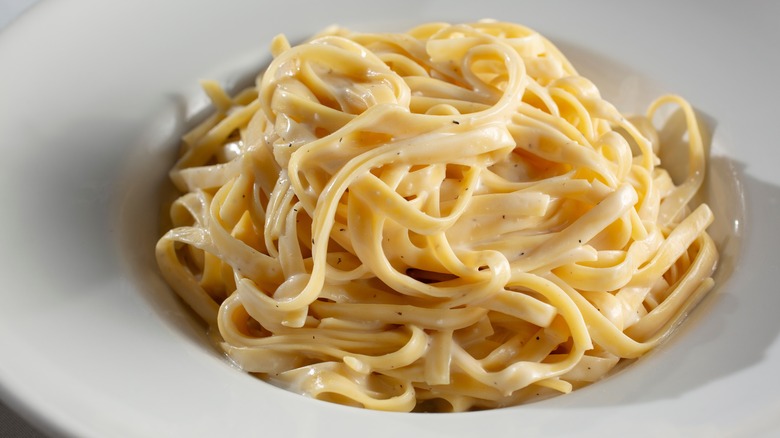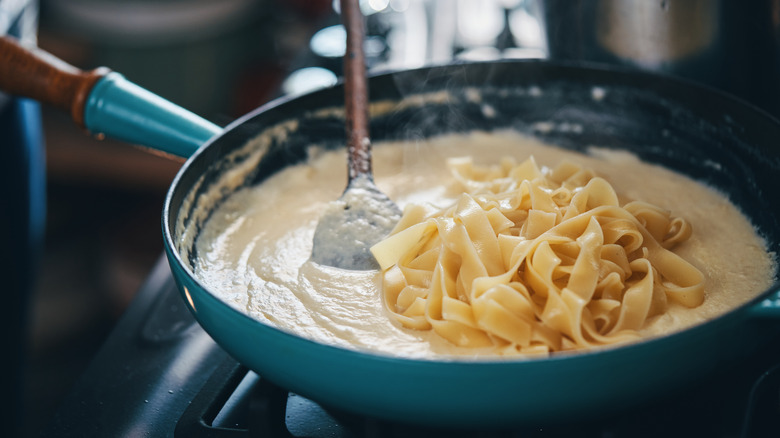Why European Butter Tastes Better Than American Butter In Alfredo Sauce
We may receive a commission on purchases made from links.
Justified or not, there's a pretty strong consensus that European butters have an edge over their American counterparts. It's all down to personal taste, but a few qualities do make European-style butter stand out, particularly when it comes to making things like creamy Alfredo sauce. Italian pastas are often defined by the sauces that blanket them, and that goes double when the dish is actually named for the sauce, such as fettuccine Alfredo or chicken Alfredo pot pie. The sauce carries the dish, and the butter carries the sauce.
For a deeply rich, creamy Alfredo sauce, you need butter with a higher percentage of milkfat, also known as butterfat. That typically means ones from Europe, or at least ones using European standards. While typical American butter harbors a minimum 80% milkfat, as defined by the USDA, most European butter percentages fall within the range of 82% to 90%. That means more pure milkfat for deeper dairy flavors, plus a dense, velvety texture. There's also lower water in the mix, as the EU restricts water content to a maximum 16%.
You may notice a grassier natural flavor in European butter, often resulting from how the cows are raised. Pasture-raised, grass-fed cows typically produce milk with earthier, complex flavors, compared to stateside cows fed with grains, corn, or soy. There can also be also a slightly tangy taste from active cultures added to European butters. All these things make a big difference in Alfredo sauce — but no worries, as these richer, creamier butters aren't entirely missing in America.
Some American butters rise to the creamy occasion
One glance at butter prices quickly reveals that European butter sold in American can carry much higher price tags. After all, they've taken a long journey to get from their home country to your kitchen. But some have become so common in the U.S. that prices aren't necessarily a dealbreaker, especially when making a meal-defining sauce like Alfredo. One example is Kerrygold Pure Irish Butter, which is made from the milk of grass-fed Irish cows, with no rBST or other growth hormones. You can generally find it in major grocery venues for a comparatively low price compared to fancy butters from France or Italy.
If you like to spend your hard-earned dollars with U.S. businesses, there's some good news on that front. It's increasingly easier to find American butters with at least slightly higher butterfat, which translates to those creamier, more flavorful Alfredo sauces. For example, Organic Valley produces butter with 84% butterfat, and the cows are grass-fed, so you get those subtle, grassy flavors adding layers of complexity.
Several small-scale dairy farmers bring European-style butters to American cooking, including the cultured butter at Vermont Creamery. There's also the very French-sounding Plugrá butter made by a very American organization, the Dairy Farmers of America. Both these butters roll into your kitchen with 82% milkfat. That may not sound significantly higher than the average U.S. butters, but you'll definitely taste it when that thick, rich, Alfredo sauce turns your les pâtes into French haute.

